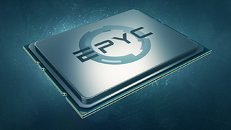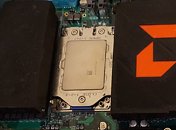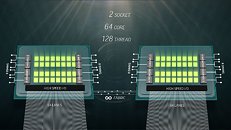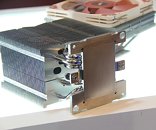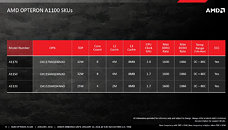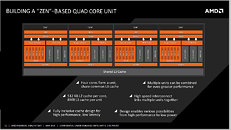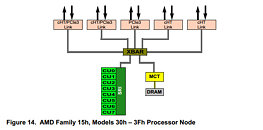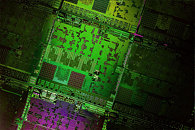Apr 18th, 2025 17:07 EDT
change timezone
Latest GPU Drivers
New Forum Posts
- Can Intel recover in DYI market anytime soon? (13)
- GPU Pricing and Performance (16)
- Gtx 1080 TI which is the best stable driver version available (2)
- RX 9000 series GPU Owners Club (394)
- Which 5080 graphics card? (0)
- Request for BIOS file of nVidia GeForce RTX A5000 from ThinkPad P15 Gen 2 (4)
- How to relubricate a fan and/or service a troublesome/noisy fan. (242)
- It's happening again, melting 12v high pwr connectors (1027)
- Place your bets, what node will rtx 6000/RDNA 5(UDNA 1?) use (8)
- TPU's Nostalgic Hardware Club (20257)
Popular Reviews
- ASUS GeForce RTX 5060 Ti TUF OC 16 GB Review
- NVIDIA GeForce RTX 5060 Ti PCI-Express x8 Scaling
- Palit GeForce RTX 5060 Ti Infinity 3 16 GB Review
- G.SKILL Trident Z5 NEO RGB DDR5-6000 32 GB CL26 Review - AMD EXPO
- ASUS GeForce RTX 5060 Ti Prime OC 16 GB Review
- Teevolution Terra Pro Review
- MSI GeForce RTX 5060 Ti Gaming OC 16 GB Review
- Zotac GeForce RTX 5060 Ti AMP 16 GB Review
- MSI GeForce RTX 5060 Ti Gaming Trio OC 16 GB Review
- ASUS GeForce RTX 5080 TUF OC Review
Controversial News Posts
- NVIDIA GeForce RTX 5060 Ti 16 GB SKU Likely Launching at $499, According to Supply Chain Leak (182)
- NVIDIA Sends MSRP Numbers to Partners: GeForce RTX 5060 Ti 8 GB at $379, RTX 5060 Ti 16 GB at $429 (127)
- Nintendo Confirms That Switch 2 Joy-Cons Will Not Utilize Hall Effect Stick Technology (105)
- NVIDIA Launches GeForce RTX 5060 Series, Beginning with RTX 5060 Ti This Week (103)
- Over 200,000 Sold Radeon RX 9070 and RX 9070 XT GPUs? AMD Says No Number was Given (100)
- Nintendo Switch 2 Launches June 5 at $449.99 with New Hardware and Games (99)
- Sony Increases the PS5 Pricing in EMEA and ANZ by Around 25 Percent (85)
- NVIDIA PhysX and Flow Made Fully Open-Source (77)
News Posts matching #Opteron
Return to Keyword Browsing
Intel Itanium Reaches End of the Road with Linux Kernel Stopping Updates
Today marks the end of support for Itanium's IA-64 architecture in the Linux kernel's 6.7 update—a significant milestone in the winding-down saga of Intel Itanium. Itanium, initially Intel's ambitious venture into 64-bit computing, faced challenges and struggled throughout its existence. It was jointly developed by Intel and HP but encountered delays and lacked compatibility with x86 software, a significant obstacle to its adoption. When AMD introduced x86-64 (AMD64) for its Opteron CPUs, which could run x86 software natively, Intel was compelled to update Xeon, based on x86-64 technology, leaving Itanium to fade into the background.
Despite ongoing efforts to sustain Itanium, it no longer received annual CPU product updates, and the last update came in 2017. The removal of IA-64 support in the Linux kernel will have a substantial impact since Linux is an essential operating system for Itanium CPUs. Without ongoing updates, the usability of Itanium servers will inevitably decline, pushing the (few) remaining Itanium users to migrate to alternative solutions, which are most likely looking to modernize their product stack.
Despite ongoing efforts to sustain Itanium, it no longer received annual CPU product updates, and the last update came in 2017. The removal of IA-64 support in the Linux kernel will have a substantial impact since Linux is an essential operating system for Itanium CPUs. Without ongoing updates, the usability of Itanium servers will inevitably decline, pushing the (few) remaining Itanium users to migrate to alternative solutions, which are most likely looking to modernize their product stack.

AMD Announces Appointment of New Corporate Fellows
AMD today announced the appointment of five technical leaders to the role of AMD Corporate Fellow. These appointments recognize each leader's significant impact on semiconductor innovation across various areas, from graphics architecture to advanced packaging. "David, Nathan, Suresh, Ben and Ralph - whose engineering contributions have already left an indelible mark on our industry - represent the best of our innovation culture," said Mark Papermaster, chief technology officer and executive vice president of Technology and Engineering at AMD. "Their appointments to Corporate Fellow will enable AMD to innovate in new dimensions as we work to deliver the most significant breakthroughs in high-performance computing in the decade ahead."
Appointment to AMD Corporate Fellow is an honor bestowed on the most accomplished AMD innovators. AMD Corporate Fellows are appointed after a rigorous review process that assesses not only specific technical contributions to the company, but also involvement in the industry, mentoring of others and improving the long-term strategic position of the company. Currently, only 13 engineers at AMD hold the title of Corporate Fellow.
Appointment to AMD Corporate Fellow is an honor bestowed on the most accomplished AMD innovators. AMD Corporate Fellows are appointed after a rigorous review process that assesses not only specific technical contributions to the company, but also involvement in the industry, mentoring of others and improving the long-term strategic position of the company. Currently, only 13 engineers at AMD hold the title of Corporate Fellow.

AMD Confirms They are Affected by Spectre, too
The public disclosure on January 3rd that multiple research teams had discovered security issues related to how modern microprocessors handle speculative execution has brought to the forefront the constant vigilance needed to protect and secure data. These threats seek to circumvent the microprocessor architecture controls that preserve secure data.
At AMD, security is our top priority and we are continually working to ensure the safety of our users as new risks arise. As a part of that vigilance, I wanted to update the community on our actions to address the situation.
At AMD, security is our top priority and we are continually working to ensure the safety of our users as new risks arise. As a part of that vigilance, I wanted to update the community on our actions to address the situation.

AMD Struggles to Be Excluded from Unwarranted Intel VT Flaw Kernel Patches
Intel is secretly firefighting a major hardware security vulnerability affecting its entire x86 processor lineup. The hardware-level vulnerability allows unauthorized memory access between two virtual machines (VMs) running on a physical machine, due to Intel's flawed implementation of its hardware-level virtualization instruction sets. OS kernel-level software patches to mitigate this vulnerability, come at huge performance costs that strike at the very economics of choosing Intel processors in large-scale datacenters and cloud-computing providers, over processors from AMD. Ryzen, Opteron, and EPYC processors are inherently immune to this vulnerability, yet the kernel patches seem to impact performance of both AMD and Intel processors.
Close inspection of kernel patches reveal code that forces machines running all x86 processors, Intel or AMD, to be patched, regardless of the fact that AMD processors are immune. Older commits to the Linux kernel git, which should feature the line "if (c->x86_vendor != X86_VENDOR_AMD)" (condition that the processor should be flagged "X86_BUG_CPU_INSECURE" only if it's not an AMD processor), have been replaced with the line "/* Assume for now that ALL x86 CPUs are insecure */" with no further accepted commits in the past 10 days. This shows that AMD's requests are being turned down by Kernel developers. Their intentions are questionable in the wake of proof that AMD processors are immune, given that patched software inflicts performance penalties on both Intel and AMD processors creating a crony "level playing field," even if the latter doesn't warrant a patch. Ideally, AMD should push to be excluded from this patch, and offer to demonstrate the invulnerability of its processors to Intel's mess.
Close inspection of kernel patches reveal code that forces machines running all x86 processors, Intel or AMD, to be patched, regardless of the fact that AMD processors are immune. Older commits to the Linux kernel git, which should feature the line "if (c->x86_vendor != X86_VENDOR_AMD)" (condition that the processor should be flagged "X86_BUG_CPU_INSECURE" only if it's not an AMD processor), have been replaced with the line "/* Assume for now that ALL x86 CPUs are insecure */" with no further accepted commits in the past 10 days. This shows that AMD's requests are being turned down by Kernel developers. Their intentions are questionable in the wake of proof that AMD processors are immune, given that patched software inflicts performance penalties on both Intel and AMD processors creating a crony "level playing field," even if the latter doesn't warrant a patch. Ideally, AMD should push to be excluded from this patch, and offer to demonstrate the invulnerability of its processors to Intel's mess.

AMD Ryzen 9 Series "Threadripper" CPU Socket Detailed
AMD Ryzen 9 "Threadripper" series 12-core, 14-core, and 16-core client desktop processors, which will form the company's next-generation high-end desktop (HEDT) lineup, which goes against Intel Core i9 "Skylake-X" series, could come in a brand new socket. This shouldn't come as a surprise because the chips have higher electrical requirements, besides double the I/O of socket AM4 Ryzen processors, such as a 44-lane PCIe gen 3.0 root complex, quad-channel DDR4 memory interface, and more. This socket, according to a "HotHardware" report, is an LGA (land-grid array) with 4,094 pins.
The new LGA-4094 socket, so-called SP3r2, will be slightly scaled up from the SP3 socket AMD has been selling enterprise Opteron-brand multi-socket CPUs on (pictured below). The consumer version of this socket could feature a more user-friendly retention mechanism that shouldn't require a screwdriver to fasten. Motherboards based on this distinctively rectangular socket will feature up to eight DDR4 DIMM slots to hold quad-channel DDR4 memory, and over four PCI-Express 3.0 x16 slots, with support for 3-way and 4-way multi-GPU solutions. The motherboards will also feature copious amounts of onboard devices, M.2 slots, and other storage connectivity. Since "Threadripper" is rumored to be a multi-chip module of two 14 nm "Summit Ridge" dies linked together on-package with with an Infinity Fabric interconnect, only one of the two dies links to the motherboard chipset (AMD X399 chipset), while all the PCIe lanes of the second die (including those which would make up the chipset bus) are freed up.
The new LGA-4094 socket, so-called SP3r2, will be slightly scaled up from the SP3 socket AMD has been selling enterprise Opteron-brand multi-socket CPUs on (pictured below). The consumer version of this socket could feature a more user-friendly retention mechanism that shouldn't require a screwdriver to fasten. Motherboards based on this distinctively rectangular socket will feature up to eight DDR4 DIMM slots to hold quad-channel DDR4 memory, and over four PCI-Express 3.0 x16 slots, with support for 3-way and 4-way multi-GPU solutions. The motherboards will also feature copious amounts of onboard devices, M.2 slots, and other storage connectivity. Since "Threadripper" is rumored to be a multi-chip module of two 14 nm "Summit Ridge" dies linked together on-package with with an Infinity Fabric interconnect, only one of the two dies links to the motherboard chipset (AMD X399 chipset), while all the PCIe lanes of the second die (including those which would make up the chipset bus) are freed up.

Microsoft Distances Itself from Intel - Announces ARM Cloud Server Platform
Microsoft is looking to reduce costs in its Azure cloud computing platforms for tasks like search, storage, machine learning and big data. And after having developed a version of Windows for servers that use ARM processors, in a joint work with Qualcomm and Cavium, Microsoft seems to also be looking forward to leave its dependency on Intel products as nothing but a memory. Microsoft's ARM server design, dubbed Project Olympus, looks to hardware innovations so as to reduce costs, boosting competitiveness and flexibility in regards to other big players in the cloud space, like Amazon and Alphabet. That the design is open source is also a boon to other businesses and Microsoft partners.
Though the design isn't "deployed into production yet (...) that is the next logical step," said Jason Zander, vice president of Microsoft's Azure cloud division. "This is a significant commitment on behalf of Microsoft. We wouldn't even bring something (...) if we didn't think this was a committed project and something that's part of our roadmap."
Though the design isn't "deployed into production yet (...) that is the next logical step," said Jason Zander, vice president of Microsoft's Azure cloud division. "This is a significant commitment on behalf of Microsoft. We wouldn't even bring something (...) if we didn't think this was a committed project and something that's part of our roadmap."

AMD "Naples" is a 32-core Zen Based Monstrosity
AMD today unveiled the "Naples" enterprise processor, and it is big. The chip could mark AMD's return to competitive enterprise CPUs after years. The first "Naples" based part has some staggering specifications - 32 CPU cores spread across eight CCX units, SMT enabling 64 threads, an octa-channel (yes, eight channels) DDR4 integrated memory controller, an industry-leading 64-lane PCI-Express gen 3.0 root complex, and AMD's new Infinity Fabric interconnect, which lets it talk to the neighboring CPU, in a 2P system. The IMC supports up to 2 TB of memory.
AMD will competitively price "Naples" against Intel's Xeon E5-2600 series 2P chips, offering more cores, wider memory interfaces, more memory support, and more PCIe lanes. AMD will tap into the good energy-efficiency of its "Zen" architecture to clock these chips competitively higher than Intel chips, to churn out more overall performance. AMD is scheduled to launch the first processors based on the "Naples" silicon, within Q2-2017.
AMD will competitively price "Naples" against Intel's Xeon E5-2600 series 2P chips, offering more cores, wider memory interfaces, more memory support, and more PCIe lanes. AMD will tap into the good energy-efficiency of its "Zen" architecture to clock these chips competitively higher than Intel chips, to churn out more overall performance. AMD is scheduled to launch the first processors based on the "Naples" silicon, within Q2-2017.

Noctua Unveils Prototype Large Socket Heatsink for Xeon and Opteron Chips
Noctua unveiled a prototype fin-stack heatsink for very large CPU socket types, such as Intel Socket P (LGA3647) and AMD SP3, powering chips such as Intel Xeon Phi "Knights Landing," and upcoming AMD Opteron SP3 32-core SoCs. There will be 3U and 4U versions of this heatsink, supporting NF-A9 (92 mm) and NF-F12 (120 mm) fans. The heatsink is just a very large aluminium fin-stack, to which heat drawn from the base is fed by seven 8 mm thick nickel-plated copper heat pipes.

More AMD Socket AM4 Technical Details Emerge
More details of AMD's upcoming common socket for both its desktop APUs and high-end CPUs emerged from a recent article by Italian tech-site Bits-n-Chips. To begin with, AM4 will be an µOPGA (pin-grid array), in which the pins will continue to be located on the processor package, and contact points on the socket. The package will be square, and 40 mm in length, making it about as big as a current socket FM2+ package. It will have a pin-count of 1,331 pins, a big increase from the 942 pins of AM3+, and 906 pins of FM2+. AMD could continue to develop LGA sockets for its multi-socket capable Opteron processors based on the "Zen" architecture.
The AM4 platform layout will be functionally closer to that of the FM2+ than the AM3+. Besides the integrated memory controller, the northbridge will be entirely located on the processor die; and so the HyperTransport main system bus will be wired internally. Besides hundreds of electrical pins, the AM4 pin-map will consist of memory I/O, integrated graphics I/O, PCI-Express, and the chipset bus; besides other low-level system I/O interfaces. The memory controller on some of the first AM4 chips, such as "Summit Ridge," will natively support DDR4-2400 MHz, and DDR4-2933 MHz through overclocking.
The AM4 platform layout will be functionally closer to that of the FM2+ than the AM3+. Besides the integrated memory controller, the northbridge will be entirely located on the processor die; and so the HyperTransport main system bus will be wired internally. Besides hundreds of electrical pins, the AM4 pin-map will consist of memory I/O, integrated graphics I/O, PCI-Express, and the chipset bus; besides other low-level system I/O interfaces. The memory controller on some of the first AM4 chips, such as "Summit Ridge," will natively support DDR4-2400 MHz, and DDR4-2933 MHz through overclocking.

AMD Announces Opteron A1100 Series 64-bit ARM Processors for the Datacenter
AMD marks a major step towards delivering choice and innovation in the data center with the launch of the AMD Opteron A1100 System-on-Chip (SoC), formerly codenamed "Seattle". Jointly with its software and hardware partners, AMD is accelerating time-to-deployment of ARM-based systems and driving forward ecosystem support for ARM in the data center.
"The ecosystem for ARM in the data center is approaching an inflection point and the addition of AMD's high-performance processor is another strong step forward for customers looking for a data center-class ARM solution," said Scott Aylor, corporate vice president and general manager, Enterprise Solutions, AMD. "The macro trend of convergence between networking, storage and servers is an important catalyst in this evolution. Customers now have access to 64-bit ARM processors from the only silicon provider that also has decades of experience delivering professional enterprise and embedded products."
"The ecosystem for ARM in the data center is approaching an inflection point and the addition of AMD's high-performance processor is another strong step forward for customers looking for a data center-class ARM solution," said Scott Aylor, corporate vice president and general manager, Enterprise Solutions, AMD. "The macro trend of convergence between networking, storage and servers is an important catalyst in this evolution. Customers now have access to 64-bit ARM processors from the only silicon provider that also has decades of experience delivering professional enterprise and embedded products."

First AMD "Zen" Chips to be Quad-Core
Some of the first CPUs and APUs based on AMD's next-generation "Zen" micro-architecture could be quad-core. "Zen" will be AMD's first monolithic core design after a stint with multi-core modules, with its "Bulldozer" architecture. Our older article details what sets Zen apart from its predecessor. As expected, in a multi-core chip, Zen cores share no hardware resources with each other, than a last-level cache (L3 cache), much like Intel's current CPU architecture.
There's just one area where Zen will differ from Haswell. With Haswell, Intel has shown that it can clump any number of cores on a chip, and make them share a proportionately large L3 cache. Haswell-E features 8 cores sharing a 20 MB cache. The Haswell-EX features 18 cores sharing 45 MB of cache. With Zen, however, the scale up stops at 4 cores sharing 8 MB of L3 cache. A set of four cores makes up what AMD calls a "quad-core unit." To be absolutely clear, this is not a module, the cores share no hardware components with each other, besides the L3 cache.
There's just one area where Zen will differ from Haswell. With Haswell, Intel has shown that it can clump any number of cores on a chip, and make them share a proportionately large L3 cache. Haswell-E features 8 cores sharing a 20 MB cache. The Haswell-EX features 18 cores sharing 45 MB of cache. With Zen, however, the scale up stops at 4 cores sharing 8 MB of L3 cache. A set of four cores makes up what AMD calls a "quad-core unit." To be absolutely clear, this is not a module, the cores share no hardware components with each other, besides the L3 cache.

AMD to Launch New GPUs and APUs Only After March: CEO
In its an investor conference-call following its Q4-2014 and FY-2014 results, AMD stated that it will release new GPU and APU products starting Q2-2015, or only after March. "Going into the second quarter and the second half of the year with our new product launches, I think we feel very good about where we are positioned there," said Lisa Su, chief executive officer.
Q2-2015 will start off with the company's "Carrizo" line of all-in-one and notebook APUs. These chips will integrate the company's new "Excavator" CPU cores, with an integrated graphics core based on Graphics CoreNext 1.2 architecture (the same one AMD built its "Tonga" GPU on). Around the same time, AMD will launch new Opteron "Seattle" enterprise CPUs, which integrate up to eight ARM Cortex A-57 64-bit cores, targeting the ultra-dense server market. In Q2-2015, AMD will launch its latest Radeon Rx 300 series graphics processors. Its performance-segment part, the R9 380, will feature 4,096 GCN 1.2 cores, double that of its predecessor, and 4 GB of stacked HBM (high-bandwidth memory). Its mid-range chip, codenamed "Trinidad" will succeed "Curacao," and offer performance competitive to the $200-ish price-point.
Q2-2015 will start off with the company's "Carrizo" line of all-in-one and notebook APUs. These chips will integrate the company's new "Excavator" CPU cores, with an integrated graphics core based on Graphics CoreNext 1.2 architecture (the same one AMD built its "Tonga" GPU on). Around the same time, AMD will launch new Opteron "Seattle" enterprise CPUs, which integrate up to eight ARM Cortex A-57 64-bit cores, targeting the ultra-dense server market. In Q2-2015, AMD will launch its latest Radeon Rx 300 series graphics processors. Its performance-segment part, the R9 380, will feature 4,096 GCN 1.2 cores, double that of its predecessor, and 4 GB of stacked HBM (high-bandwidth memory). Its mid-range chip, codenamed "Trinidad" will succeed "Curacao," and offer performance competitive to the $200-ish price-point.

First ARM Cortex-A57-Based Hadoop Demonstration Achieved on AMD Opteron A-Series
AMD (NYSE: AMD) today will make the first public demonstration of Apache Hadoop running on an ARM Cortex-A57-based AMD Opteron A-Series processor. In a technical session at the JavaOne conference to be delivered this afternoon by AMD corporate fellow Leendert van Doorn, the company will show how the expanding AMD Opteron A-Series server software ecosystem now includes Hadoop, the Java-based framework for storage and large-scale data processing. In addition, Henrik Stahl, vice president, Java product management and Internet of Things at Oracle, will join van Doorn on stage to discuss Oracle's support for AMD's 64-bit ARM server architecture.
Hadoop, a distributed processing technology used primarily for big data analysis, is a rapidly expanding market expected to reach upward of $50 billion by 2020. The combination of 64-bit ARM-based servers and Hadoop is designed to accelerate the changing economics of large-scale computing by enabling distributed processing across clusters of ARM-based servers. Running on the recently announced AMD Opteron A1100 development platform, the demonstration will feature Apache Hadoop running on the Oracle JDK. Leendert will also show multiple nodes running the same demonstration using Linux environments based on Fedora technology from the Red Hat-sponsored Fedora community and the community supported OpenSUSE Project.
Hadoop, a distributed processing technology used primarily for big data analysis, is a rapidly expanding market expected to reach upward of $50 billion by 2020. The combination of 64-bit ARM-based servers and Hadoop is designed to accelerate the changing economics of large-scale computing by enabling distributed processing across clusters of ARM-based servers. Running on the recently announced AMD Opteron A1100 development platform, the demonstration will feature Apache Hadoop running on the Oracle JDK. Leendert will also show multiple nodes running the same demonstration using Linux environments based on Fedora technology from the Red Hat-sponsored Fedora community and the community supported OpenSUSE Project.

Intel Haswell TSX Erratum as Grave as AMD Barcelona TLB Erratum
Intel's "Haswell" micro-architecture introduced the transactional synchronization extensions (TSX) as part of its upgraded feature-set over its predecessor. The instructions are designed to speed up certain types of multithreaded software, and although it's too new for any major software vendor to implement, some of the more eager independent software developers began experimenting with them, only to discover that TSX is buggy and can cause critical software failures.
The buggy TSX implementation on Core "Haswell" processors was discovered by a developer outside Intel, who reported it to the company, which then labeled it as an erratum (a known design flaw). Intel is addressing the situation by releasing a micro-code update to motherboard manufacturers, who will then release it as a BIOS update to customers. The update disables TSX on affected products (Core and Xeon "Haswell" retail, and "Broadwell-Y" engineering samples).
The buggy TSX implementation on Core "Haswell" processors was discovered by a developer outside Intel, who reported it to the company, which then labeled it as an erratum (a known design flaw). Intel is addressing the situation by releasing a micro-code update to motherboard manufacturers, who will then release it as a BIOS update to customers. The update disables TSX on affected products (Core and Xeon "Haswell" retail, and "Broadwell-Y" engineering samples).

AMD Opteron 64-Bit ARM-Based Developer Kits Now Available
AMD today announced the immediate availability of the AMD Opteron A1100-Series developer kit, which features AMD's first 64-bit ARM-based processor, codenamed "Seattle." AMD is the first company to provide a standard ARM Cortex-A57-based server platform for software developers and integrators. Software and hardware developers as well as early adopters in large datacenters are eligible and can apply on AMD's website.
"The journey toward a more efficient infrastructure for large-scale datacenters is taking a major step forward today with broader availability of our AMD Opteron A1100-Series development kit," said Suresh Gopalakrishnan, general manager and vice president, Server business unit, AMD. "After successfully sampling to major ecosystem partners such as firmware, OS, and tools providers, we are taking the next step in what will be a collaborative effort across the industry to reimagine the datacenter based on the open business model of ARM innovation."
"The journey toward a more efficient infrastructure for large-scale datacenters is taking a major step forward today with broader availability of our AMD Opteron A1100-Series development kit," said Suresh Gopalakrishnan, general manager and vice president, Server business unit, AMD. "After successfully sampling to major ecosystem partners such as firmware, OS, and tools providers, we are taking the next step in what will be a collaborative effort across the industry to reimagine the datacenter based on the open business model of ARM innovation."

AMD Debuts New 12- and 16-Core Opteron 6300 Series Processors
AMD today announced the immediate availability of its new 12- and 16-core AMD Opteron 6300 Series server processors, code named "Warsaw." Designed for enterprise workloads, the new AMD Opteron 6300 Series processors feature the "Piledriver" core and are fully socket and software compatible with the existing AMD Opteron 6300 Series. The power efficiency and cost effectiveness of the new products are ideal for the AMD Open 3.0 Open Compute Platform - the industry's most cost effective Open Compute platform.
Driven by customers' requests, the new AMD Opteron 6338P (12 core) and 6370P (16 core) processors are optimized to handle the heavily virtualized workloads found in enterprise environments, including the more complex compute needs of data analysis, xSQL and traditional databases, at optimal performance per-watt, per-dollar.
Driven by customers' requests, the new AMD Opteron 6338P (12 core) and 6370P (16 core) processors are optimized to handle the heavily virtualized workloads found in enterprise environments, including the more complex compute needs of data analysis, xSQL and traditional databases, at optimal performance per-watt, per-dollar.

AMD Readies 16-core Processors with Full Uncore
AMD released developer documentation for a new processor it's working on, and the way it's worded describes a chip with 8 modules, working out to 16 cores, on a single piece of silicon, referred to as Family 15h Models 30h - 3fh. This is not to be confused with the company's Opteron 6300-series "Abu Dhabi" chips, which are multi-chip modules of two 8-core dies, in the G34 package.
What's more, unlike the current "Abu Dhabi" and "Seoul" chips, the new silicon features a full-fledged uncore, complete with a PCI-Express gen 3.0 root complex that's integrated into the processor die. In what's more proof that it's a single die with 8 modules and not an MCM of two dies with 4 modules each, the document describes the die as featuring four HyperTransport links; letting it pair with four other processors in 4P multi-socket configurations. Such systems would feature a total core count of 64. There's no clarity on which exact micro-architecture the CPU modules are based on. Without doubt, AMD is designing this chip for its Opteron enterprise product stack, but it should also give us a glimmer of hope that AMD could continue to serve up high-performance client CPU, only ones that can't be based on socket AM3+.
What's more, unlike the current "Abu Dhabi" and "Seoul" chips, the new silicon features a full-fledged uncore, complete with a PCI-Express gen 3.0 root complex that's integrated into the processor die. In what's more proof that it's a single die with 8 modules and not an MCM of two dies with 4 modules each, the document describes the die as featuring four HyperTransport links; letting it pair with four other processors in 4P multi-socket configurations. Such systems would feature a total core count of 64. There's no clarity on which exact micro-architecture the CPU modules are based on. Without doubt, AMD is designing this chip for its Opteron enterprise product stack, but it should also give us a glimmer of hope that AMD could continue to serve up high-performance client CPU, only ones that can't be based on socket AM3+.

AMD Inching Towards an Increasingly ARM-based Future with "Seattle"
AMD is inching toward a possible post-x86 future for itself, beginning with its enterprise product stack. In a blog-post, the company outlined a landmark product bearing its enterprise Opteron branding, codenamed "Seattle," which will be designed for scalar data-centers. Based on the 64-bit ARMv8 architecture by ARM, the chip will feature either four or eight cores based on AMD's own implementation of ARMv8, and a high-bandwidth integrated memory controller with support for up to 128 GB of system memory with ECC.
Since ARM-based processors are traditionally part of heavily integrated systems on chips (SoCs), "Seattle" will be an SoC, and among other things, will integrate a 10 Gb/s Ethernet controller, with support for AMD's FreedomFabric technology. Linux kernel 3.7 and above will come with ARMv8 architecture support, and Microsoft is already developing a Windows kernel with ARMv8 support that will be implemented on both its client (Windows RT, Windows Phone) product lines, and a future version of Windows Server. That said, AMD won't give up on x86. As the only active x86 licensee apart from VIA, AMD will continue to make APUs with 64-bit x86 cores for as far as the eye can see (in other words 2015). Future of its client CPU (non-APU) lineup based on the AM3+ socket, however, appears bleak.
Since ARM-based processors are traditionally part of heavily integrated systems on chips (SoCs), "Seattle" will be an SoC, and among other things, will integrate a 10 Gb/s Ethernet controller, with support for AMD's FreedomFabric technology. Linux kernel 3.7 and above will come with ARMv8 architecture support, and Microsoft is already developing a Windows kernel with ARMv8 support that will be implemented on both its client (Windows RT, Windows Phone) product lines, and a future version of Windows Server. That said, AMD won't give up on x86. As the only active x86 licensee apart from VIA, AMD will continue to make APUs with 64-bit x86 cores for as far as the eye can see (in other words 2015). Future of its client CPU (non-APU) lineup based on the AM3+ socket, however, appears bleak.

AMD Unveils Server Strategy and Roadmap
AMD today publicly disclosed its strategy and roadmap to recapture market share in enterprise and data center servers by unveiling innovative products that address key technologies and meet the requirements of the fastest-growing data center and cloud computing workloads.
Additionally, AMD revealed details of its 2014 server portfolio including best-in-class Accelerated Processing Units (APUs), two- and four-socket CPUs, and details on what it expects to be the industry's premier ARM server processor. This is on the heels of announcing the general availability of the AMD Opteron X-Series processor, code named "Kyoto," which dominates the small-core server market on every performance benchmark. These forthcoming AMD Opteron processors bring important innovations to the rapidly changing compute market, including integrated CPU and GPU compute (APU); high core-count ARM servers for high-density compute in the data center; and substantial improvements in compute per-watt per-dollar and total cost of ownership.
Additionally, AMD revealed details of its 2014 server portfolio including best-in-class Accelerated Processing Units (APUs), two- and four-socket CPUs, and details on what it expects to be the industry's premier ARM server processor. This is on the heels of announcing the general availability of the AMD Opteron X-Series processor, code named "Kyoto," which dominates the small-core server market on every performance benchmark. These forthcoming AMD Opteron processors bring important innovations to the rapidly changing compute market, including integrated CPU and GPU compute (APU); high core-count ARM servers for high-density compute in the data center; and substantial improvements in compute per-watt per-dollar and total cost of ownership.

AMD Launches the AMD Opteron X-Series Family of Microserver Processors
AMD today unveiled a new family of low power server processors: the AMD Opteron X-Series optimized for scale-out server architectures. The first AMD Opteron X-Series processors, formerly known as "Kyoto," are the highest density, most power-efficient small core x86 processors ever built. The new X1150 and X2150 processors beat the top performing Intel Atom processor on key performance benchmarks, including single thread and throughput performance with superior power-efficiency, twice the cores and L2 cache with a more advanced pipeline architecture, higher integration and support for up to 32 gigabytes of DRAM -- 4x more than the Intel Atom processor.
The AMD Opteron X-Series processors come in two variants. The AMD Opteron X2150, which consumes as little as 11 watts, is the first server APU system-on-a-chip integrating CPU and GPU engines with a high-speed bus on a single die. This enables customers to take advantage of leading-edge AMD Radeon HD 8000 graphics technology for multimedia-oriented server workloads. The AMD Opteron X1150, which consumes as little as 9 watts, is a CPU-only version optimized for general scale-out workloads.
The AMD Opteron X-Series processors come in two variants. The AMD Opteron X2150, which consumes as little as 11 watts, is the first server APU system-on-a-chip integrating CPU and GPU engines with a high-speed bus on a single die. This enables customers to take advantage of leading-edge AMD Radeon HD 8000 graphics technology for multimedia-oriented server workloads. The AMD Opteron X1150, which consumes as little as 9 watts, is a CPU-only version optimized for general scale-out workloads.

AMD Open 3.0 Brings Simplicity, Power Efficiency & Cost-Effectiveness to Data Centers
AMD today is launching the AMD Open 3.0 platform (formerly codenamed "Roadrunner,") a radical rethinking of the server motherboard designed to the standards developed by the Open Compute Project. AMD Open 3.0 enables substantial gains in computing flexibility, efficiency and operating cost by simplifying motherboard design with a single base product to address multiple enterprise workloads, including high-performance computing, cloud infrastructure and storage. This innovative design is optimized to eliminate features typically over-provisioned in traditional server offerings.
Today's servers are designed with a "one size fits most" approach incorporating many features and capabilities that can inefficiently utilize space and power, increasing cost. Many mega data centers have engineers developing optimized platforms with the minimum set of components for specific workloads. The desired result is a tailored solution with the ideal combination of power, space and cost. The AMD Open 3.0 platform is designed to easily enable IT professionals to "right size" the server to meet specific compute requirements. Fidelity Investments and Goldman Sachs are evaluating AMD Open 3.0 as part of their collaboration on the Open Compute Project.
Today's servers are designed with a "one size fits most" approach incorporating many features and capabilities that can inefficiently utilize space and power, increasing cost. Many mega data centers have engineers developing optimized platforms with the minimum set of components for specific workloads. The desired result is a tailored solution with the ideal combination of power, space and cost. The AMD Open 3.0 platform is designed to easily enable IT professionals to "right size" the server to meet specific compute requirements. Fidelity Investments and Goldman Sachs are evaluating AMD Open 3.0 as part of their collaboration on the Open Compute Project.

AMD Announces Opteron 4300 and 3300 Series Processors
AMD today unveiled nine new mid-range and entry-level AMD Opteron 4300 Series and 3300 Series server processors increasing performance per watt versus the previous generation to maximize compute capabilities in power-constrained environments1, while delivering outstanding value to cloud providers and web hosts. The AMD Opteron 3300 Series processors provide enterprise-class features in a low power envelope at a desktop processor price, making it ideal for web hosts and small- and medium-sized businesses.
The AMD Opteron 4300 Series processors offer up to 15 percent better performance versus the prior generation, based on SPECint benchmark results2. And SPECpower results show up to a 24 percent improvement in performance per watt. As with the AMD Opteron 6300 Series processors, these are socket compatible with the previous generation processor, providing an effortless upgrade path for customers.
The AMD Opteron 4300 Series processors offer up to 15 percent better performance versus the prior generation, based on SPECint benchmark results2. And SPECpower results show up to a 24 percent improvement in performance per watt. As with the AMD Opteron 6300 Series processors, these are socket compatible with the previous generation processor, providing an effortless upgrade path for customers.

ASUS Announces AMD Opteron 6300 Series-Ready Server Line
Integrating new AMD Opteron 6300 processors, a full range of ASUS servers and server boards offers greater flexibility with five expansion slots and extreme computing power via support for up to four CPUs and two GPUs in select models (RS920A-E6/RS8, RS924A-E6/RS8 servers) to accommodate the needs of data center, enterprise and HPC applications. The dedicated BIOS developed by ASUS to make the most of the new processors is now available at the official ASUS support site.
RS920A-E6/RS8 and RS924A-E6/RS8 servers have been designed with a 4-way layout that supports up to four AMD Opteron 6300 processors on a single board, delivering extreme computing power and enhanced scalability. With each Opteron 6300 processor utilizing 16 cores, the new ASUS servers can sustain up to 64 cores as well as a maximum 512GB memory. They ship with four PCI Express 2.0 x16 slots plus one dedicated slot for an ASUS PIKE RAID card. This layout offers more flexible system setup and upgrade options, with an internal design that allows for up to twin double-deck graphics cards. The combined CPU/GPU power on offer creates high-output hybrid computing that matches the processing-intensive demands of HPC and data center applications.
RS920A-E6/RS8 and RS924A-E6/RS8 servers have been designed with a 4-way layout that supports up to four AMD Opteron 6300 processors on a single board, delivering extreme computing power and enhanced scalability. With each Opteron 6300 processor utilizing 16 cores, the new ASUS servers can sustain up to 64 cores as well as a maximum 512GB memory. They ship with four PCI Express 2.0 x16 slots plus one dedicated slot for an ASUS PIKE RAID card. This layout offers more flexible system setup and upgrade options, with an internal design that allows for up to twin double-deck graphics cards. The combined CPU/GPU power on offer creates high-output hybrid computing that matches the processing-intensive demands of HPC and data center applications.

AMD Secures No. 1 Spot in the 40th Edition of the Top500 Supercomputer Sites
AMD today demonstrated its ongoing support for high performance computing by providing massive compute capability, performance and flexibility for the world's number one ranked supercomputer. This ranking, the sixth number-one spot for AMD-based supercomputers in the last five years, highlights AMD's commitment to enabling indispensable computing technology by offering competitive performance at low cost.
The top supercomputer, a Cray XK7 nicknamed "Titan" and containing more than 18,000 AMD Opteron processors, was cited in the latest list of the Top500 Supercomputer Sites and is installed at the U.S. Department of Energy's (DOE) Oak Ridge National Labs (ORNL).
The top supercomputer, a Cray XK7 nicknamed "Titan" and containing more than 18,000 AMD Opteron processors, was cited in the latest list of the Top500 Supercomputer Sites and is installed at the U.S. Department of Energy's (DOE) Oak Ridge National Labs (ORNL).
AMAX Scales Performance With the AMD Opteron 6300 Series Processors
AMAX, a leader in High-Performance Computing (HPC) solutions, today announced the immediate availability of its latest, most advanced CPU-based HPC solutions built upon the world's fastest 16-core x86 processor, the AMD Opteron 6300 series "Piledriver" CPUs.
The new server solutions target HPC, Big Data, Cloud, and Datacenter users with large scale-out applications seeking the highest performance and scalability to accelerate, transform and advance scientific discovery and business analytics. Multi-threaded workloads are becoming increasingly popular, but also ever more complex and demanding, and users are challenging AMAX to deliver solutions that provide a rich mix of performance, scalability and efficiency -- precisely what AMAX's ServMax server solutions with AMD Opteron 6300 series processors are engineered for.
The new server solutions target HPC, Big Data, Cloud, and Datacenter users with large scale-out applications seeking the highest performance and scalability to accelerate, transform and advance scientific discovery and business analytics. Multi-threaded workloads are becoming increasingly popular, but also ever more complex and demanding, and users are challenging AMAX to deliver solutions that provide a rich mix of performance, scalability and efficiency -- precisely what AMAX's ServMax server solutions with AMD Opteron 6300 series processors are engineered for.
Apr 18th, 2025 17:07 EDT
change timezone
Latest GPU Drivers
New Forum Posts
- Can Intel recover in DYI market anytime soon? (13)
- GPU Pricing and Performance (16)
- Gtx 1080 TI which is the best stable driver version available (2)
- RX 9000 series GPU Owners Club (394)
- Which 5080 graphics card? (0)
- Request for BIOS file of nVidia GeForce RTX A5000 from ThinkPad P15 Gen 2 (4)
- How to relubricate a fan and/or service a troublesome/noisy fan. (242)
- It's happening again, melting 12v high pwr connectors (1027)
- Place your bets, what node will rtx 6000/RDNA 5(UDNA 1?) use (8)
- TPU's Nostalgic Hardware Club (20257)
Popular Reviews
- ASUS GeForce RTX 5060 Ti TUF OC 16 GB Review
- NVIDIA GeForce RTX 5060 Ti PCI-Express x8 Scaling
- Palit GeForce RTX 5060 Ti Infinity 3 16 GB Review
- G.SKILL Trident Z5 NEO RGB DDR5-6000 32 GB CL26 Review - AMD EXPO
- ASUS GeForce RTX 5060 Ti Prime OC 16 GB Review
- Teevolution Terra Pro Review
- MSI GeForce RTX 5060 Ti Gaming OC 16 GB Review
- Zotac GeForce RTX 5060 Ti AMP 16 GB Review
- MSI GeForce RTX 5060 Ti Gaming Trio OC 16 GB Review
- ASUS GeForce RTX 5080 TUF OC Review
Controversial News Posts
- NVIDIA GeForce RTX 5060 Ti 16 GB SKU Likely Launching at $499, According to Supply Chain Leak (182)
- NVIDIA Sends MSRP Numbers to Partners: GeForce RTX 5060 Ti 8 GB at $379, RTX 5060 Ti 16 GB at $429 (127)
- Nintendo Confirms That Switch 2 Joy-Cons Will Not Utilize Hall Effect Stick Technology (105)
- NVIDIA Launches GeForce RTX 5060 Series, Beginning with RTX 5060 Ti This Week (103)
- Over 200,000 Sold Radeon RX 9070 and RX 9070 XT GPUs? AMD Says No Number was Given (100)
- Nintendo Switch 2 Launches June 5 at $449.99 with New Hardware and Games (99)
- Sony Increases the PS5 Pricing in EMEA and ANZ by Around 25 Percent (85)
- NVIDIA PhysX and Flow Made Fully Open-Source (77)



